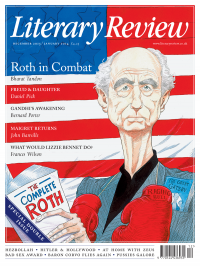Alex Goodall
Dropping the Screwdriver
Command and Control
By Eric Schlosser
Allen Lane/The Penguin Press 632pp £25
I can vividly remember, as an undergraduate in the late 1990s, my introduction to the history of nuclear geopolitics. While working my way through a pile of texts on the Cuban Missile Crisis, I began compiling a list of the misunderstandings and mistakes that could have led to accidental nuclear conflagration had things turned out differently. Although not the most serious incident, one that sticks in my mind involved a black bear that stumbled onto an air defence command post in Duluth, Minnesota. A guard saw a shadowy figure attempting to climb the security fence, shot it, then activated an intruder alarm. Due to the wrong alarm being activated at nearby Volk Field Air Base, this caused an order to be issued to scramble nuclear-armed F-106A interceptors to repel a Soviet attack. Fortunately, at the last moment, the bear was identified as an honest American species and the order rescinded. Reading about these near misses, I nearly overwhelmed myself with imaginative anxiety. I left the university library, whose looming central tower had, in my fevered mind, come to resemble some kind of cruise missile silo, stared up at an appropriately ominous autumnal sky, and half-expected to see a fleet of Soviet bombers streaking over the English countryside, gunning grimly westwards despite being more than thirty years late for battle.
Thankfully, I made it home safely. But, as Eric Schlosser’s new book on nuclear arms and the messy effort to manage them makes clear, the events that produced such an emphatic response were by no means limited to the crisis of October 1962. Since beginning its experiments with atomic weaponry,

Sign Up to our newsletter
Receive free articles, highlights from the archive, news, details of prizes, and much more.@Lit_Review
Follow Literary Review on Twitter
Twitter Feed
It wasn’t until 1825 that Pepys’s diary became available for the first time. How it was eventually decrypted and published is a story of subterfuge and duplicity.
Kate Loveman tells the tale.
Kate Loveman - Publishing Pepys
Kate Loveman: Publishing Pepys
literaryreview.co.uk
Arthur Christopher Benson was a pillar of the Edwardian establishment. He was supremely well connected. As his newly published diaries reveal, he was also riotously indiscreet.
Piers Brendon compares Benson’s journals to others from the 20th century.
Piers Brendon - Land of Dopes & Tories
Piers Brendon: Land of Dopes & Tories - The Benson Diaries: Selections from the Diary of Arthur Christopher Benson by Eamon Duffy & Ronald Hyam (edd)
literaryreview.co.uk
Of the siblings Gwen and Augustus John, it is Augustus who has commanded most attention from collectors and connoisseurs.
Was he really the finer artist, asks Tanya Harrod, or is it time Gwen emerged from her brother’s shadow?
Tanya Harrod - Cut from the Same Canvas
Tanya Harrod: Cut from the Same Canvas - Artists, Siblings, Visionaries: The Lives and Loves of Gwen and Augustus John by Judith Mackrell
literaryreview.co.uk